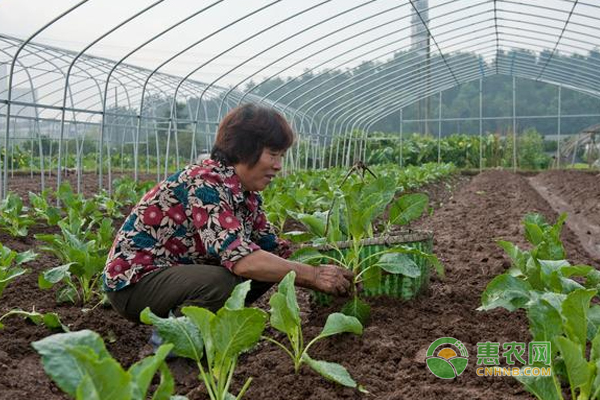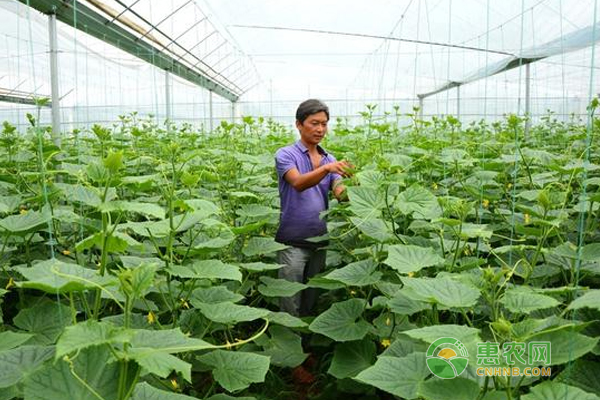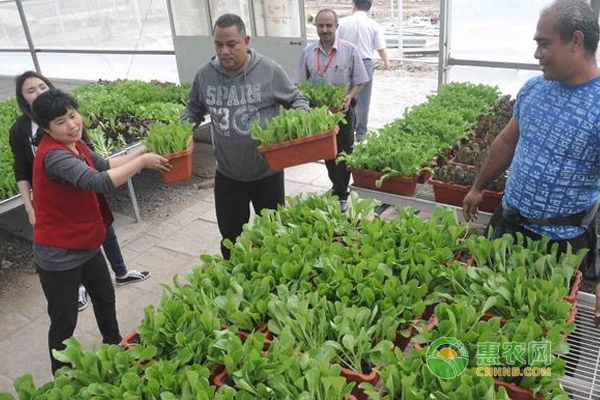With the improvement of the economic level, people are increasingly demanding food. The current vegetable market has no off-season and hot-season vegetables. The vegetable market is diverse, which is attributed to the cultivation of greenhouse vegetables. How many growers know about anti-season greenhouse vegetable cultivation? I don't know how to follow Huinong.com! Off-season greenhouse vegetable cultivation technology:    1 Soil blending Soil preparation work, the deployment of nutritious soil in the greenhouse is the premise of anti-season greenhouse vegetable cultivation. First, we should choose a plot to build a greenhouse with fertile soil, abundant sunshine, and soil suitable for vegetable growth. The temperature in the northern region is low and the winter time is short. If the selected land does not allow the vegetables to fully receive light, the yield of the vegetables will be reduced. Second, because the growth of different vegetables has different soil requirements, the planter should deploy nutrient soil under suitable soil conditions. The common anti-season greenhouse vegetable cultivation technology uses fully decomposed round fertilizer, or cooperate with prematurely. Composting, when conditions permit, planters can add appropriate amount of peat soil in the greenhouse to ensure nutrients and fertility in the soil and promote healthy growth of vegetables to achieve good planting results. 2 Rational fertilization The anti-season greenhouse vegetable cultivation technology is based on the growth and development of vegetables and the nutritional status of the land, and formulates efficient and reasonable fertilization formula to achieve the balance of nitrogen and phosphorus, and supplement the trace elements necessary for vegetable growth. First, the planter should control the amount of fertilization and apply it in the vegetable greenhouse one month in advance. Second, the planter should pay attention to the method of fertilization. After mixing the organic fertilizer and the inorganic fertilizer, fully add it to the soil and then plow the land. And the layer-by-layer deep tillage method is adopted to ensure the good physical and chemical properties of the soil. The applied fertilizer must meet the nutritional needs of each stage of vegetable growth and development to ensure the healthy growth of vegetables. Third, the planter should carry out fermentation treatment before fertilization, so that the fertilizer is in a state of maturity, avoiding the toxic gas threatening the health of the vegetables, and also paying attention to not accumulating the fertilizer in the greenhouse for a long time, which will hinder the growth of vegetables. 3 Reasonable irrigation Different vegetables have different water requirements, and the same vegetables have different water requirements at different times. Therefore, the anti-season greenhouse vegetable cultivation technology requires planters to maintain reasonable soil moisture and control the number of irrigation to meet the growth needs of different vegetables. Planters should adjust the temperature of irrigation according to the scale and actual conditions of the greenhouse, protect the roots of vegetable plants, and reduce the occurrence of vegetable diseases. 4 Strengthening field management First of all, it is necessary to remove the weeds in the greenhouse soil in time, to avoid weeds competing for the nutrients necessary for the growth of vegetables, and to regularly loosen the soil to promote the healthy growth of vegetable seeds and seedlings. Secondly, timely eradication of weak and weak plants in greenhouse cultivation sites to prevent the spread of pests and diseases to other normal vegetable seedlings and reduce the yield of vegetables. Thirdly, the greenhouse film covers the mulch, and the mulch has the functions of heat preservation, water retention and fertilizer retention, improving soil fertility, promoting vegetable growth and development, and increasing its yield. According to the growth of different vegetables, it is rationally regulated and sprayed with auxin or growth inhibitor. Finally, biological control, drug control, etc. are applied to vegetable pests and diseases, and natural enemies of pests are introduced to avoid harmful organisms from invading vegetables, or high-efficiency but less toxic pesticides can be used to avoid pests and diseases and not affect vegetable yield. 5 Do a good job of keeping warm and moisturizing Anti-season greenhouse vegetable cultivation technology requires good prevention and control of vegetables. There are three reasons for the occurrence of freezing damage: first, the lack of water in vegetable seedlings; second, less heat storage in the soil, combined with the loss of heat in soil compaction, low temperature at night, and easy formation of freezing damage; third, lack of nutrients in vegetable roots. Low cold resistance. Planters can do warm and moisturizing and cold protection work from the following aspects: First, maintain soil moisture, fill the water when the room temperature reaches 20 degrees Celsius or above in winter; second, regularly loosen the soil to prevent soil compaction; third, spray on the surface of the leaves Photosynthetic micro-fertilizer, quantitative supplementation of nutrition; Fourth, regular ventilation, not only supplements carbon dioxide but also reduces the indoor and outdoor temperature difference, so that vegetable plants adapt to the ambient temperature, to achieve strong growth; fifth, covering multiple layers of plastic wrap, forming a thermal insulation layer, Reduce heat loss during winter nights. In the view of Huinong.com, the greenhouse vegetable cultivation can meet the needs of all vegetable markets, and the development prospects are broad. Therefore, the growers have to learn the technical points of the anti-season greenhouse vegetable cultivation. Striped Bonito,Sarda orientalis,Fresh Striped Bonito,Fresh Sarda orientalis Zhoushan Boda Aquatic Products Co.,Ltd , https://www.baida-aquatic.com

